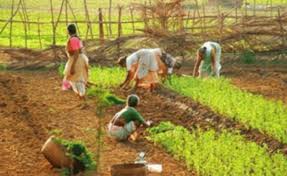Agricultural Technology Management Agency (ATMA) Scheme

The Agricultural Technology Management Agency (ATMA) Scheme, formally known as the “Support to State Extension Programmes for Extension Reforms,” is a centrally sponsored scheme in India launched in 2005. It aims to decentralize and revamp the agricultural extension system by making it more farmer-driven and accountable. Activities of ATMA Scheme Formation and activation of Farmer Interest Groups (FIGs): These […]
U.S., Japan and South Korea signed Digital Infrastructure Growth Initiative for IndiaFramework (DiGi Framework)

The United States, Japan, and South Korea announced on 26 October 2024 that they will launch a new framework to collaborate with the Indian private sector to support digital infrastructure in India. The new framework is called the Digital Infrastructure Growth Initiative for India Framework (DiGi Framework). The United States, Japan, and South Korea announced a new framework […]
Government of India invites comments on draft Arbitration and Conciliation(Amendment) Bill, 2024

The Department of Legal Affairs in the law ministry has invited comments on the draft Arbitration and Conciliation (Amendment) Bill, 2024, saying “the aim and purpose is to provide further boost to institutional arbitration, reduce court intervention in arbitrations and ensuring timely conclusion of arbitration proceedings”. The draft bill comes months after an expert committee […]
India’s Finance Minister highlights Global South’s role in shaping MultilateralDevelopment Banks

Union Finance Minister Nirmala Sitharaman highlighted the contributions of the Global South to the foundations of multilateral development banks at the 1944 Bretton Woods conference and emphasized on embedding diverse voices in decision-making to ensure a truly inclusive and global development framework. Finance Minister noted the pivotal contributions of the Global South to the foundations of Multilateral […]
Rural Entrepreneurship Development Program

Establishing businesses is important for a country’s progress as it augments economic and employment growth. State and central governments are continuously launching new and attractive schemes to encourage their citizens to come up with innovative business ideas. Setting up an enterprise depends on one’s capacity, which differs from person to person. If the enterprise must […]
Excise Tax

Taxation plays a vital role in the economy and makes a significant contribution to it. In India, the tax structure encompasses different types of taxes and duties like excise duty. To streamline the process of paying taxes and claiming returns, it is essential for individuals whose income comes under a taxable bracket to become familiar with […]
Is GST Applicable on Reimbursement

Travel expense is an unavoidable element of conducting business in today’s globalized world. Employees frequently travel to different places to attend meetings, conferences, training sessions, or fulfill various professional duties. These costs typically include transportation, lodging, meals, and other incidental expenses. Employers usually establish reimbursement policies to offset these costs and allow employees to recover […]
Gujarat Property

Land registration in Gujarat offers several benefits, including legal protection, proof of ownership, and access to government services such as property tax payment and property transfer. In Gujarat, the stamp duty for land registration varies based on the location and type of land. The stamp duty is generally 5% of the property value for urban […]
Income Tax Rebate Under Section 87A

The income tax rebate under Section 87A provides some relief to the taxpayers who fall under the tax category of 10%. Any individual whose annual net income does not exceed Rs.5 Lakh qualifies to claim tax rebate under Section 87A of the Income Tax Act, 1961. This implies an individual can get a rebate on the tax […]
Kanyashree Prakalpa

Kanyashree Prakalpa seeks to improve the status and well-being of girls, specifically those from socio-economically disadvantaged families through Conditional Cash Transfers by:Incentivizing them to continue in education for a longer period, and complete secondary or higher secondary education, or equivalent in technical or vocational steams, thereby giving them a better footing in both the economic […]